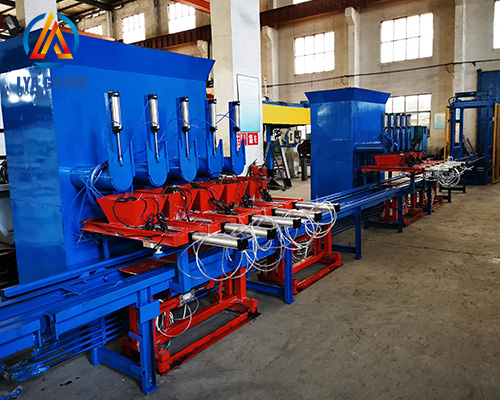Veneer stone production line
News 2023ŚĻī12śúą21śó• 196

A veneer stone production line is a specialized setup of machinery and equipment used to manufacture veneer stones, also known as thin stone veneer or manufactured stone. Veneer stones are lightweight, thin slices of natural or synthetic stone that are used as a decorative facing material on walls, fireplaces, or other architectural elements. Here are the key components and processes typically involved in a veneer stone production line:
Raw material preparation: The production line starts with the preparation of the raw materials. This can involve sourcing natural stone or using synthetic materials that mimic the appearance of natural stone. Natural stone is quarried and processed to obtain suitable stone blocks or slabs for further processing.
Cutting and shaping: The raw stone material is cut and shaped to the desired dimensions and thickness of the veneer stones. This can be done using saws, wire saws, or other cutting equipment. The stones may be cut into various shapes and sizes to create a diverse range of veneer stone products.
Surface treatment: The surface of the veneer stones is treated to achieve the desired texture and appearance. This can involve processes such as grinding, honing, sandblasting, or shot blasting to create a smooth, textured, or weathered surface finish. Surface treatments can also include applying pigments or colorants to enhance the stone’s appearance.
Adhesive application: An adhesive or bonding agent is applied to the back of the veneer stones to facilitate their installation. The adhesive can be a specialized mortar or adhesive compound designed for stone veneer applications. The adhesive is typically applied in a consistent manner to ensure proper adhesion and durability.
Molding and pressing: The treated veneer stones are placed into molds or forms and subjected to pressure to compress and shape them. This can be done using hydraulic or mechanical presses that apply pressure to the stones, ensuring they have the desired shape, thickness, and texture.
Curing and drying: Once molded, the veneer stones undergo a curing and drying process to harden and stabilize them. The curing process can involve the use of heat, humidity, or other controlled conditions to facilitate proper curing of the adhesive and strengthen the veneer stones.
Quality control: Throughout the production line, quality control measures are implemented to ensure that the veneer stones meet the required specifications and standards. This includes inspecting for dimensional accuracy, surface finish quality, and strength testing.
Packaging and storage: Once the veneer stones have been inspected and approved, they are typically packaged and prepared for storage or transportation. Packaging can vary depending on the specific requirements and market preferences, but common methods include stacking the stones on pallets or bundling them for protection.
Automation and control: Many veneer stone production lines incorporate automation and control systems to manage and monitor the entire production process. This includes controlling the operation of machinery, adjusting parameters, tracking production data, and ensuring safety measures are in place.
